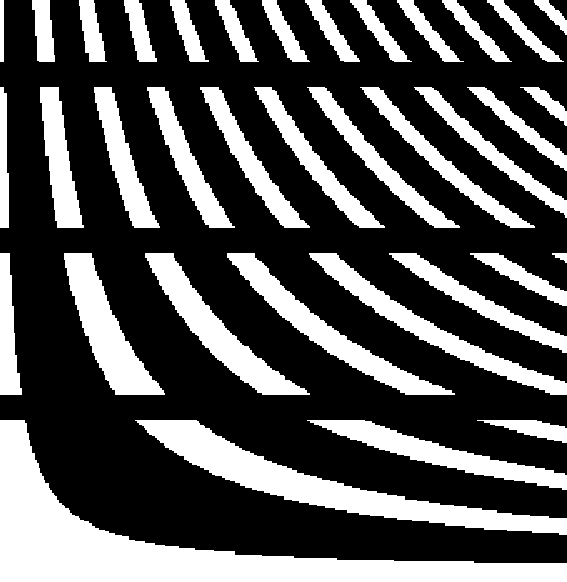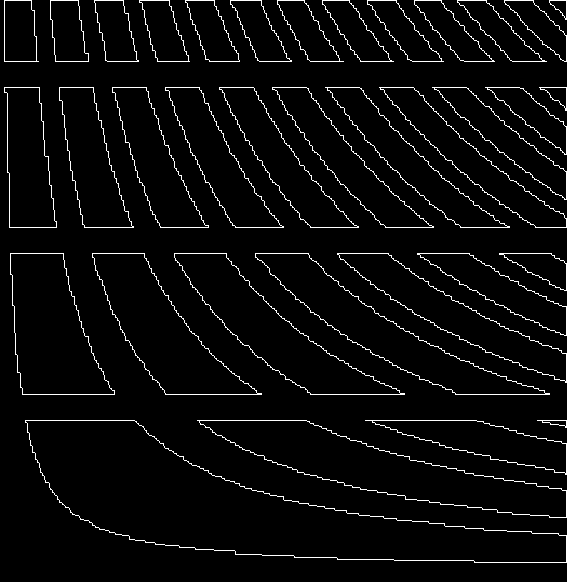I would like to have curves with smooth boundaries and the lines across them, with sharp corners in intersection.
Part 1: isolate the boundaries
Import the image and remove the frame:
img = Import["https://i.sstatic.net/SJwTu.png"];
img1 = ImagePad[img, -4]

Remove the white borders excepting the left border (we'll need it at the next steps):
border = BorderDimensions[ImageTake[img1, 20]];
img2 = ImagePad[img1, -border + {{4, 0}, {0, 0}}]

Find positions of the pixels of the horizontal lines and make them white:
horizontalLinesPos = {All, #2} & @@@ PixelValuePositions[ImageTake[img2, All, 1], 0];
img3 = ReplacePixelValue[img2, horizontalLinesPos -> 1]

Find internal perimeters of the black components:
img4 = MorphologicalTransform[ColorNegate@img3, "Remove"]

At this step we get a problem. We have to decide what to do with the horizontal "tails" like this:
ArrayPlot[1 - ImageData[ImageTake[img4, {51, 67}, {334, 351}]], Mesh -> True,
ImageSize -> 400]

Since such "tails" correspond to actual data points (represented as black pixels on the original image), it is reasonable to keep them.
Now we have to remove the horizontal and vertical borders excepting at the left where the vertical border actually is a continuation of the curve. And we have to keep the "tails" at the same time. For this purpose it is better to start again from the img2:
img3 = MorphologicalTransform[ColorNegate@img2, "Remove", Padding -> 1];
img4 = ReplacePixelValue[img3, horizontalLinesPos -> 0]

Part 2: extract the curves
masks = ComponentMeasurements[img4, "Mask"];
curves = Transpose[Reverse@#]["NonzeroPositions"] & /@ masks[[;; , 2]];
horLines = Join[{∞}, Mean /@ Split[horizontalLinesPos[[;; , 2]], Abs[#1 - #2] == 1 &], {0}]
{∞, 508, 342, 175, 0}
dataLines =
DeleteCases[
Flatten[#, 1] & /@
Transpose[PadRight[
Table[Select[curves, horLines[[i]] > Min[#[[;; , 2]]] > horLines[[i + 1]] &],
{i, Length[horLines] - 1}], Automatic, Missing[]]], {Missing[], Missing[]}, {2}];
ListPlot[dataLines]

Part 3: smooth the curves
There are infinitely many possible ways to perform the smoothing. For recovering the original data points the approach shown by nikie in this answer seems the most appropriate. If the goal is just to obtain smoothed boundaries, one can use approaches shown in this thread.










ImageMesh[ColorNegate[image]]would be a good start. $\endgroup$Bluras the first step:Binarize[Blur[Blur[i, 6], 6], .5]. That would be easy but with the additional requirement the problem becomes tricky. $\endgroup$